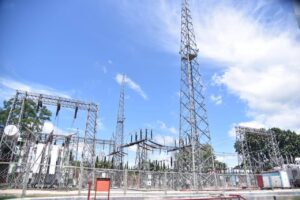Tripura Power Minister Ratan Lal Nath inaugurated a new 132 kV substation in Manu, benefiting over 21,000 households. Highlighting rapid solar growth from 3 MW to 29 MW since 2018, he announced plans for 150 MW solar capacity, 50,000 household installations, and modernization of state power infrastructure.
Tripura has taken a decisive step toward strengthening its power infrastructure and embracing renewable energy with the inauguration of a new 132 kV power substation in Manu, Dhalai district. Power Minister Ratan Lal Nath, while inaugurating the facility, announced the state’s vision for inclusive development and energy sustainability, emphasizing that electricity is not just a basic necessity but a key measure of socio-economic progress.
The newly inaugurated Manu substation is expected to directly benefit more than 21,554 households across several regions, including Manu, Chailengta, SK Para, Dhumacherra, Machli, 82 Mile, Nepal Tilla, Chawmanu, Bagcherr, Manikpur, and Thalcherra. This development marks a major leap in bridging the power gap in rural and semi-urban areas of Tripura, ensuring stable and uninterrupted electricity supply for thousands of families.
Growth of Solar Power in Tripura
Highlighting the state government’s progress in renewable energy, Nath shared that Tripura has witnessed an exponential rise in solar power generation. Since 2018, solar energy capacity has surged from just 3 MW to 29 MW, a nearly tenfold increase. The government now has an ambitious target to generate 150 MW of solar energy within the next two years.

To achieve this, the state plans to install solar panels in 50,000 households and across 1 million consumer points. Additionally, the government has taken steps to convert all state-run offices to solar power within the next two months, signalling a bold move toward sustainability and reduction of dependence on conventional energy sources.
The minister stressed that the transition is not just about electricity supply, but also about preparing for the future. “The limitations of gas-based power generation are becoming clear. For example, the Rukhia plant, designed for 63 MW, currently produces only 19 MW due to gas shortages. Similar issues exist at Palatana and Ramchandranagar. Gas reserves are finite, and therefore we must embrace solar energy for a sustainable tomorrow, in line with Prime Minister Narendra Modi’s call,” Nath said.
Expanding Power Infrastructure
Tripura’s power infrastructure has undergone remarkable expansion in the last six years. The consumer base has grown significantly, rising from 7.21 lakh in 2018 to 10.38 lakh today. Similarly, the number of 132 kV substations has expanded from 12 to 20, with two more currently under construction.
At the 33 kV level, substations have grown from 44 to 75, and another 18 are in progress. One of the most striking achievements has been the rapid expansion of underground cabling. From just 95 kilometers of underground cable in 2018, the figure has now reached 571 kilometers, marking a vast improvement in both safety and reliability of supply.
The newly launched Manu substation is part of this broader strategy to modernize the power sector and extend reliable services to underserved communities. The minister urged consumers to keep the department informed when adding new appliances or load in their households so that transformer capacities could be adjusted accordingly. This step, he noted, would prevent disruptions and ensure balanced distribution of power.
Inclusive Development and Future Outlook
Nath described the inauguration as a testament to Tripura’s commitment to inclusive growth. By bringing electricity to remote and interior areas, the government aims to reduce disparities between urban and rural communities. Energy availability, he emphasized, directly influences education, healthcare, industrial development, and overall quality of life.
The event also saw the presence of prominent leaders, including MDCs Bimal Kanti Chakma and Sanjoy Das, as well as MLAs Paul Dangshu and Shambhu Lal Chakma. Their attendance reflected the significance of the project for the region’s development.
| Also Read: Tripura Row: Ananda Marga Slams CPI(M) |
Looking ahead, Nath reiterated that Tripura’s power vision is not limited to capacity expansion but also to sustainability. The focus on solar power, combined with modernization of transmission and distribution systems, is expected to make the state a model for clean energy adoption in the Northeast.
As Tripura steadily increases its reliance on renewable energy, projects like the Manu substation are set to play a critical role in shaping a brighter, greener, and more equitable future for its citizens.





